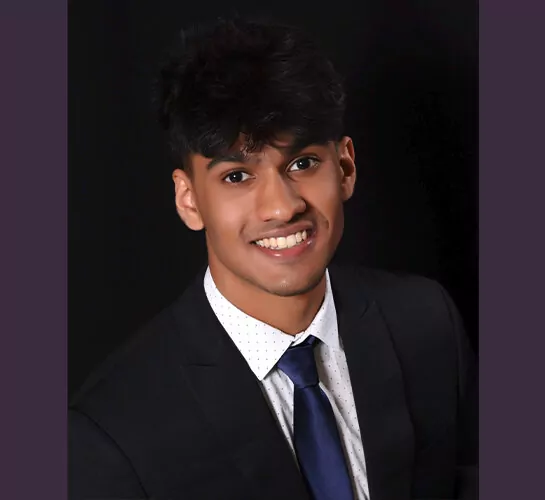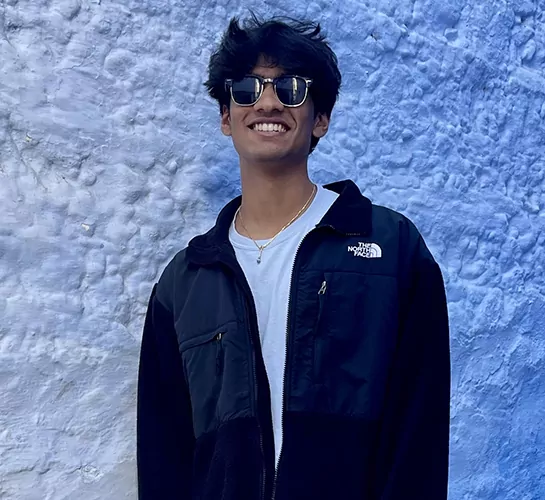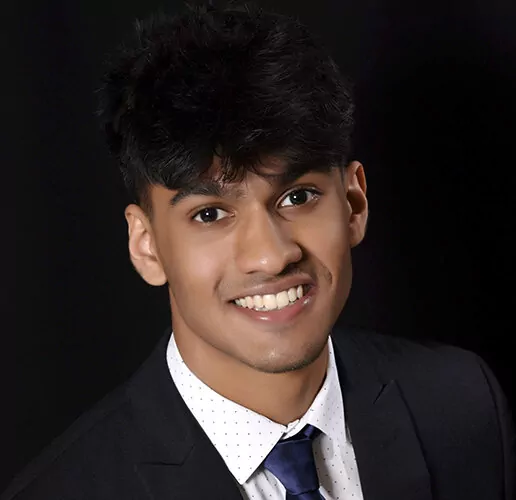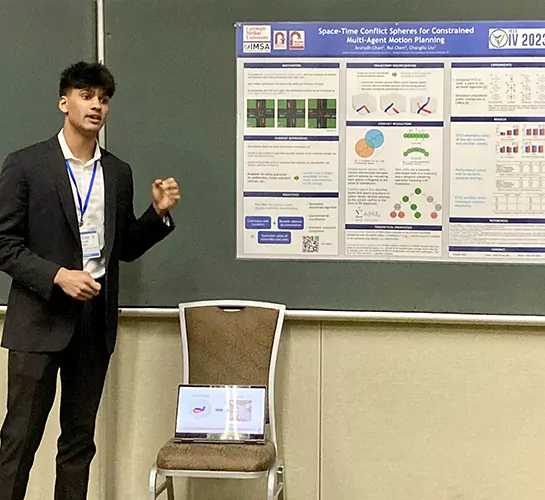Deeper Dive
I’ve been in love with cars since I was a little kid. As I grew older, though, I began to notice how dangerous today’s roads are. This realization motivated me to explore autonomous vehicles (AVs) as a potential solution. My love for computer algorithms and my experience with cooperative robots from high school robotics competitions sparked an idea: What if AVs could collaborate in their trajectory planning? Upon further looking into this idea, I came across the concept of connected autonomous vehicles (CAVs), where multiple AVs can communicate over the air. It turned out that cooperative planning for CAVs could be formulated as a robotics problem called multi-agent motion planning (MAMP). However, as I researched existing MAMP algorithms, I noticed a significant limitation of current work: none of these approaches could formally guarantee collision-free navigation in settings involving dynamic obstacles while maintaining efficiency. This would be a crucial trait for ensuring the safety of pedestrians, cyclists, and human drivers in a future where AVs roam the streets. I knew that a more flexible trajectory representation strategy was necessary to address this shortcoming. Following some weeks of diligent work, I discovered the novel representation I sought. After months of proof-writing, implementation, and testing, I’ve finally brought this idea to life: Space-Time Conflict Spheres is the first CAV coordination algorithm with theoretical safety guarantees for motion planning among dynamic obstacles.
While the foundational concept of my algorithm emerged during brainstorming, refining and formalizing it for implementation proved to be a long and demanding process. For example, I encountered difficulties in ensuring kinematic feasibility, realizing that velocity profiles needed to adhere to acceleration constraints for real-world applicability. This required going back to square one many times and experimenting with various approaches before settling on my current strategy. Furthermore, discussing the theoretical properties of my algorithm turned out to be a much more complex task than completing the proofs assigned in my school’s linear algebra course. Debugging was also arduous, with numerous late nights and early mornings spent searching for elusive errors, some stemming from absentminded typos made weeks prior. Although these setbacks were often frustrating, overcoming each challenge made me more knowledgeable and productive than before, making me grateful for my difficulties as I look back on my journey.
A future with safe AVs would benefit everyone, and it’s quite exciting to envision. We would finally address the 1.3 million deaths caused by road accidents yearly, and drive this number to zero. Drivers and passengers everywhere, from schoolchildren to workers, would travel in confidence and comfort. Pedestrians and cyclists would no longer have to worry about being hit by a distracted driver. Industries that rely on trucking for the transport of goods would operate more efficiently and save resources. Car ownership would likely lose popularity due to AV ride-hailing services, meaning cities would no longer be crowded by parking spaces and traffic. By leveraging communication between AVs and ensuring the safety of those endangered on today’s roads, my work brings society one step closer to making the dream of perfect transportation a reality.



